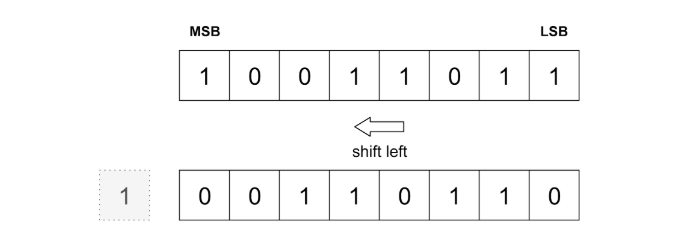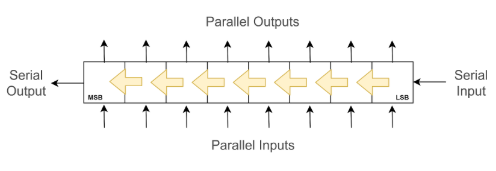What is a Shift Register?
A shift register is a synchronous device that stores a single data word and can perform a logical shift operation on the bits. A logical shift moves each bit of the word either to the left or the right. Empty spaces are usually filled with zeros:

Shift registers consist of several single-bit latches which are connected in a serial daisy-chain arrangement so that one latch‘s output is connected to the next input:

Some shifters allow you to choose which direction the bits will be moved.
Types of Shift Registers
Generally, there are four different types of shift registers available that differ in the way the data is fed into and pushed out of the device:
- Serial input, serial output
- Serial input, parallel output
- Parallel input, serial output
- Parallel input, parallel output
Both, the serial and parallel types, usually operate synchronously and therefore you’ll need a clock signal for processing the data.
A register that supports serial and parallel inputs, as well as serial and parallel output, is referred to as a universal shift register.